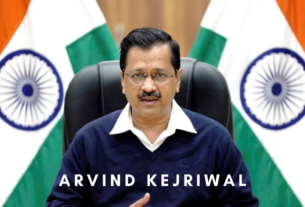In India’s booming fashion and D2C (Direct-to-Consumer) ecosystem, few stories are as inspiring as that of Sidhant Keshwani, the founder of Libas. His entrepreneurial journey is not just about building one of the most loved ethnic wear brands in India but also about the power of resilience, market understanding, and consumer-first thinking.
Today, Libas clocks over ₹700 crore in annual revenue, but the seeds of this empire were sown in the failure of a startup that sold ₹5,000 T-shirts—products that hardly anyone bought. This failure, however, became the foundation for one of India’s most successful ethnic wear brands.
The First Startup: A Costly Failure
Like many young entrepreneurs, Sidhant began his career with big dreams and bold ideas. His first fashion startup launched premium T-shirts priced at ₹5,000, targeting urban Indian consumers who were just beginning to explore online shopping.
The idea was aspirational, but it was ahead of its time. In the late 2000s and early 2010s, Indian consumers were not yet prepared to pay such a high price for casual wear. While international giants like Zara and H&M were slowly entering India, the average consumer hesitated to even spend ₹500 on a T-shirt.
The outcome was inevitable:
- Very few sales
- Rapidly depleting savings
- Eventual shutdown of the business
For many, this would have been the end of the road. But Sidhant treated this failure as expensive market research. He realized an important truth: building a business is not about what the founder wants to sell—it’s about what the consumer is willing and ready to buy.
The Birth of Libas (2014)
Armed with this hard-earned lesson, Sidhant launched Libas in 2014. This time, his approach was rooted in consumer insight and affordability.
Here’s how the strategy looked different from his first attempt:
- Product Focus: Instead of western wear, Libas focused on affordable ethnic wear for Indian women—a category with massive and consistent demand.
- Price Point: Products were stylish yet affordable, catering to the aspirational middle-class consumer.
- Distribution: Instead of relying solely on offline stores, Libas partnered with Amazon, Myntra, and Flipkart, meeting customers where they were already shopping.
- Operations: Libas built a tech-enabled supply chain, ensuring fast design-to-delivery cycles to keep up with rapidly changing fashion trends.
- Funding: Unlike many startups chasing investors, Libas was bootstrapped in its early years, which enforced discipline and a strong focus on profitability.
Early Struggles: Building With Discipline
The first few years were far from easy. Bootstrapping meant that every rupee had to be carefully allocated. The company faced several challenges:
- Convincing customers that an online ethnic wear brand could be as reliable as offline stores.
- Competing with established ethnic wear giants.
- Managing cash flow without large VC backing.
Despite these hurdles, Libas grew steadily. Customers appreciated the combination of trendy designs, comfortable fabrics, and affordable pricing. Each satisfied customer became a brand ambassador, and word-of-mouth helped Libas slowly scale.
The Growth Story: From Small Startup to ₹700 Crore Brand
Within a decade, Libas transformed from a small family-run venture into one of India’s fastest-growing ethnic wear companies.
Revenue Milestones
- From its modest beginnings, Libas scaled to ₹700+ crore annual revenue by FY24.
- It established a strong online presence, before expanding into offline retail outlets as well.
Product Diversification
Starting with kurtas and suits, Libas expanded into multiple categories to appeal to a wide range of customers:
- Plus-size collections for inclusivity
- Sarees to tap into timeless ethnic wear demand
- Bottom wear to offer complete outfit solutions
- Fusion ethnic styles for the modern, trend-conscious woman
This diversification not only increased sales but also helped Libas build loyalty across diverse customer segments.
Key Reasons Behind Libas’ Success
- Consumer-Centric Approach: Instead of forcing an idea onto the market, Libas listened to what Indian women wanted—affordable ethnic wear with style.
- Smart Distribution: By leveraging e-commerce platforms early on, Libas gained nationwide reach without the heavy investment required for physical stores.
- Bootstrapped Discipline: Operating without external funding initially meant that the brand grew with a focus on profitability and sustainability.
- Agility in Fashion Trends: With its tech-enabled supply chain, Libas could quickly adapt to changing consumer preferences.
Lessons for Entrepreneurs
The Libas journey offers valuable takeaways for aspiring entrepreneurs:
- Failure is not the end—it’s data. Sidhant’s failed T-shirt venture gave him insights that shaped Libas’ success.
- Know your market. Timing and pricing are as important as the product itself.
- Start lean, grow smart. Bootstrapping may be tough, but it builds discipline that investors often appreciate later.
- Adaptability wins. In industries like fashion, agility is the key to survival.
The Road Ahead
With a strong presence both online and offline, Libas is now a household name in Indian ethnic wear. As the Indian middle class continues to grow and fashion becomes increasingly digital-first, the brand is well-positioned to scale even further—perhaps crossing the ₹1,000 crore milestone in the coming years.
For Sidhant Keshwani, the journey from a failed ₹5,000 T-shirt to a thriving ₹700 crore ethnic wear brand is proof that resilience, humility, and consumer focus can turn setbacks into stepping stones.





